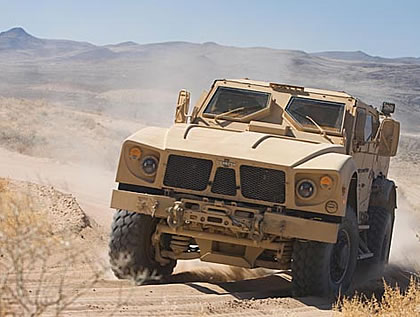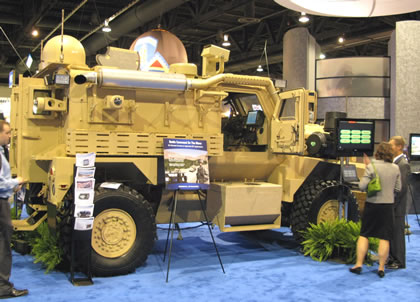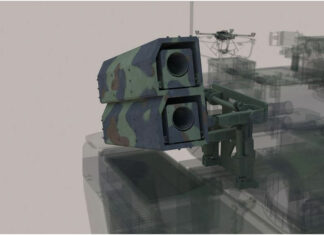
AUSA, Washington DC, October 2009: While M-ATV is being introduced in Afghanistan, 14,000 MRAP vehicles are still in theater, performing a wide range of missions. These vehicles were primarily prepared to protect troops from direct fire, improvised explosive devices and mines, performing as convoy escort. MRAPs are used optimally for security and stability operations, in high threat areas, where they provide protected mobility for counter-IED teams and support medical evacuations from hot battle areas. But these vehicles are ill-prepared for combat engagements. Given their limited maneuverability, questionable performance in urban area and problematic traverse of unimproved roads, bridges and water canals, MRAPs are challenging operational planners and commanders flexibility to the limit.

As soon as the first vehicles arrived in theater, modifications and improvements were considered, bringing protection to match the evolving threats. It was soon realized that the basic vehicle provides good protection, but needs other improvements. The heavy vehicle required much higher driver proficiency, with better training and familiarity with emergency handling. Other enhancements address field repair of damaged and disabled vehicles, as the recovery of such paralyzed behemoth becomes a daunting task for combat service support teams. These missions required calling in the Army’s heaviest recovery assets – the M88s Hercules which are typically supporting heavy brigades. New recovery vehicles and systems are currently in evaluation to fill this gap.
Electronics HUB Upgrades for MRAP
Among the MRAP enhancements displayed at AUSA 2009 was the HUB vehicle tactical functions management system, introduced by Force Protection. Installed as an add-on to standard MRAPs, the HUB integrates multiple electronic systems on the vehicle, including multiple surveillance and reconnaissance payloads, remotely operated weapons system, mission computers, radios, blue force tracking devices, GPS, acoustic fire detection systems, IED jammers, multiple radios and intercom – all are linked through the ‘vehicle network’ to enable the crew – driver and commander to operate the systems from the cabin.
The HUB network enables flexible vehicle reconfiguration, improved power management, applications of systems health monitoring and improving technical support. Enhancement and modification of the systems on board becomes more feasible with such systems, as the vehicle can better adapt to changing mission requirements. It also improves the integration and interoperability between the different systems optimally allocating spectrum and power resources among competing resources (for example, jammers and radios). The HUB also provides flexible access and task sharing within the crew members, monitoring the different systems, sensors, sectors and communications channels for every soldier.




















